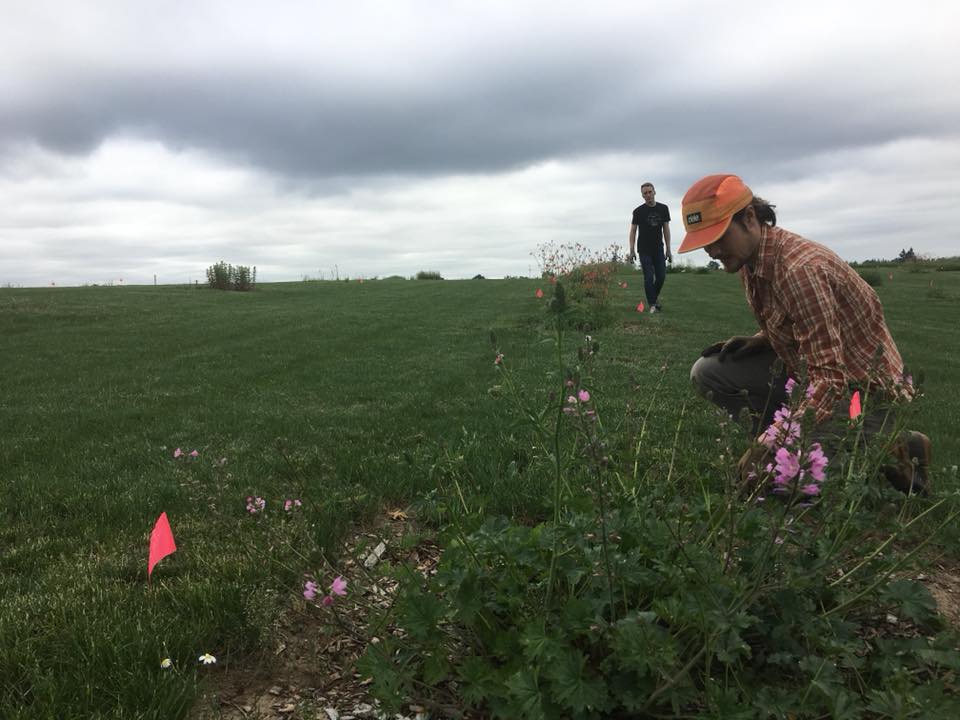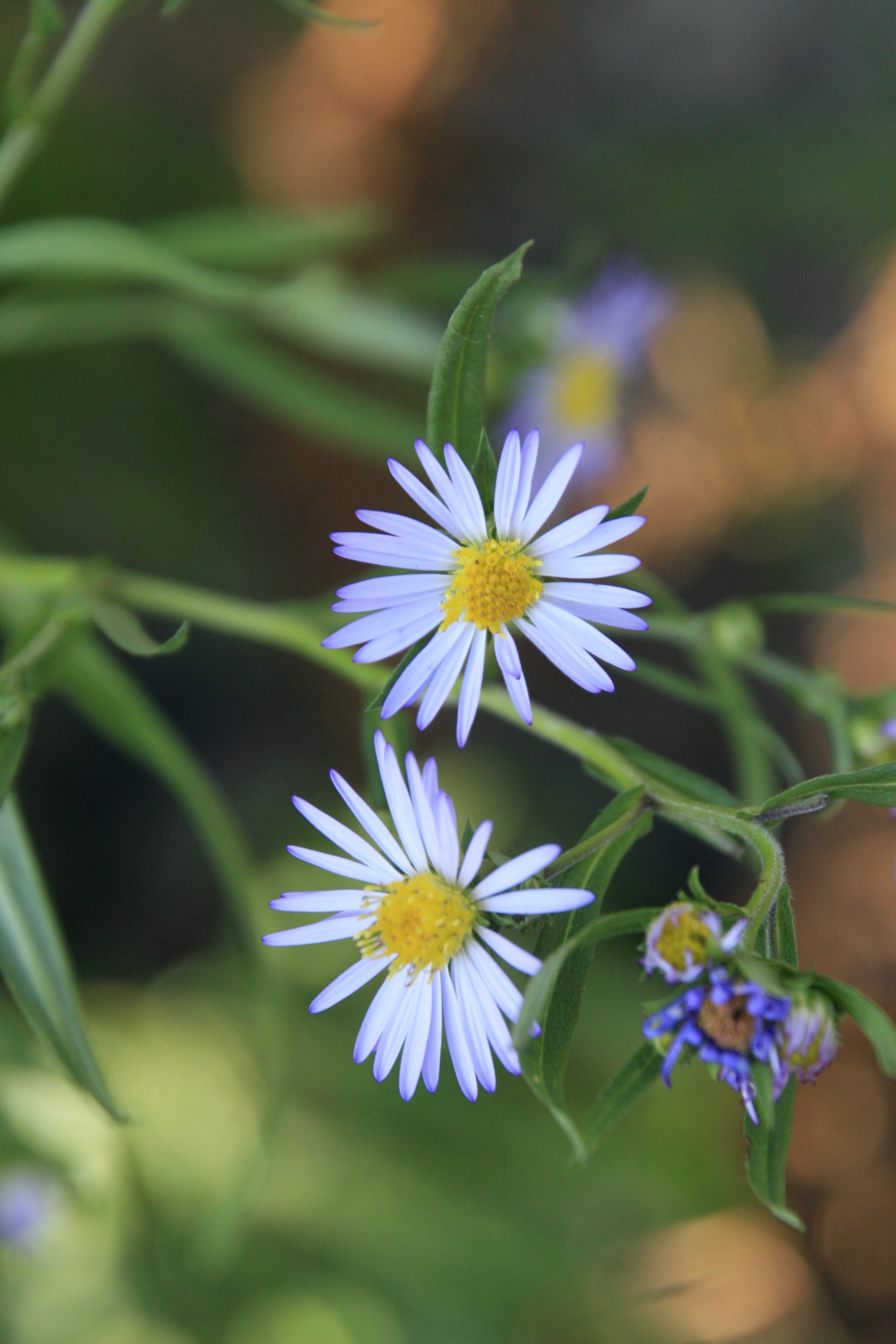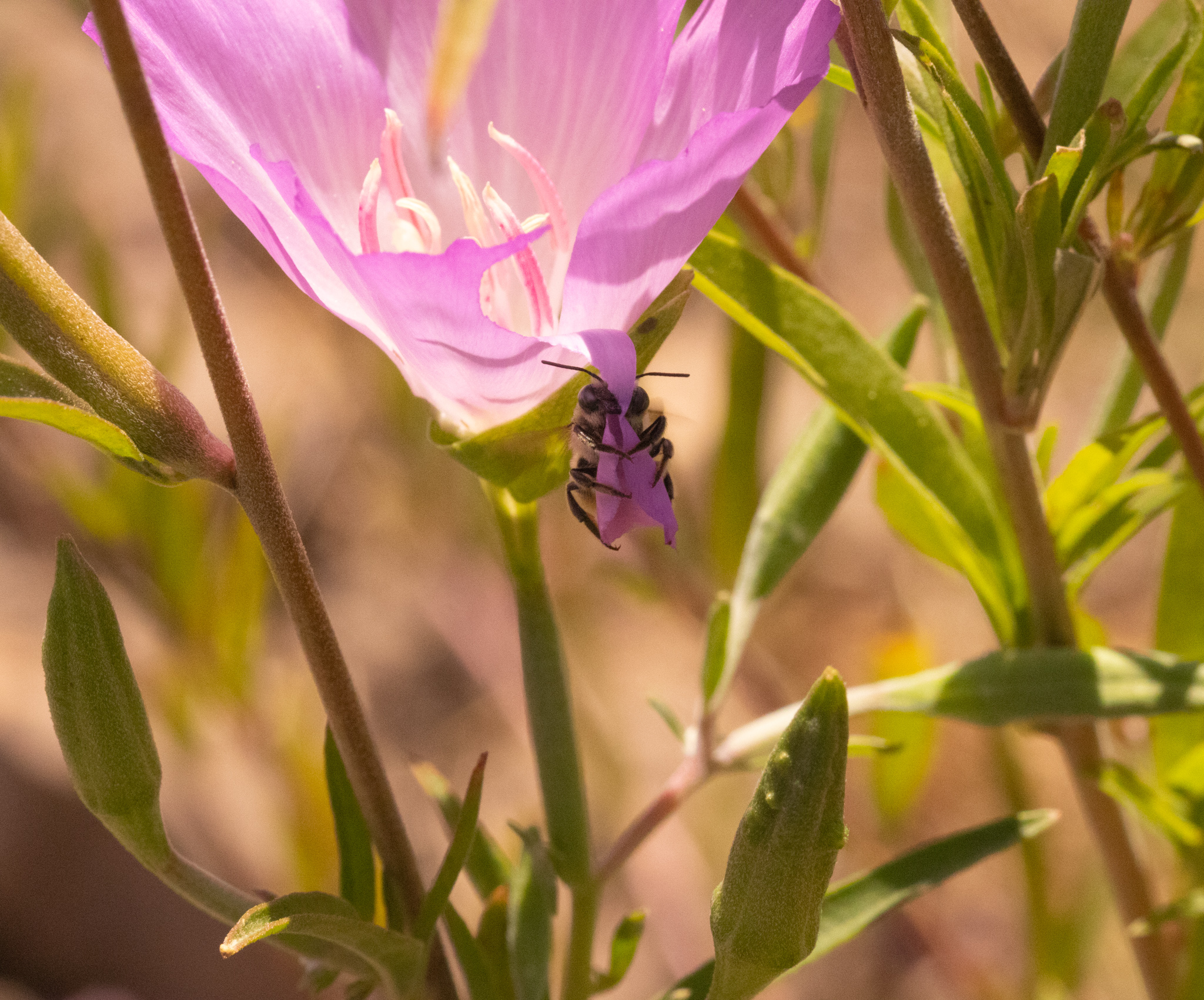We are so lucky that Lincoln Best has been in Oregon, supporting the work of the Oregon Bee Atlas. Linc was kind enough to take a look at Aaron’s bees, before going back to Canada. Aaron is currently taking a bit of time off, following his wedding this past weekend (Congratulations Aaron and Maura!). In everyone’s absence, I’m chomping at the bit to see what bees were identified from Aaron’s study of Willamette Valley native plants. So ~ for your reading pleasure, here is a preliminary list of bees collected from Aaron’s plant plots.

A few things to note about this list:
- I give no mention of abundance of each bee species. Some specimens were caught many, many times off of a flowering plant species. Others were rare, and only caught once.
- This list is not all-inclusive. It’s Labor Day. I’m working. I got excited about the bees, and wanted to share. But, I am not carefully going through every small label.
- Some bees were only found on one or two flowering plant species ~ even though Aaron’s plots are all in the same 3 acre field (1X1m plots, with each plot separated from every other plot by 6 m).
- Yellow-faced bumblebees were collected off of most plants ~ so I am not listing them, below. I also did not look at the honey-bee plant associations.
- Linc dissected male genitalia (yes ~ that is how you need to ID some bees to species), and found FOUR Bombus calignosus (all associated with lavender)~ a vulnerable species on the IUCN Red List.
- We also have Bombus fervidus, another species on the IUCN Red List (Vulnerable) on lavender, Salvia, and Gilia.
I’ll leave it to Aaron to make a rigorous accounting of bee-flower associations. But for now . . . on this holiday weekend, I was too excited to not take a peek and share initial findings with all o fyou.
Nepeta (non-native comparitor)
Oregano (non-native comparitor)
Salvia (non-native comparitor)
- Lasioglossum sp. 1
- Bombus fervidus (IUCN Red List ~ Vulnerable Species)
Lavender (non-native comparitor)
- Anthophora urbana
- Bombus calignosus (IUCN Red List ~ Vulnerable Species)
- Bombus mixtus
- Bombus fervidus (IUCN Red List ~ Vulnerable Species)
Phacelia (native)
Clarkia (native)
- Lasioglossum sp. 1
- Bombus griseocollis
- Agopostemon texanus / angelicum
- Hylaeus sp. 1
Goldenrod (native)
- Halictus confusus
- Melissodes microsticta
- Megachile montivaga
- Andrena cerasifolia
California Poppy (native)
- Lasioglossum olympiae
- Lasioglossum sp. 1
- Halictus tripartatus
- Halitcus confusus
- Agopostemon texanus / angelicum
Doug Aster (native)
- Halictus ligatus
- Melissodes microsticta
- Melissodes sp. 2
- Melissodes sp. 3
- Agopostemon virescens
- Agopostemon texanus / angelicum
- Coelioxys octodentata (J.A. noted that the previous determination of Coelioxys novomexicana merited a second look. He was right)
Oregon Iris (native)
Gilia capitata (native)
- Lasioglossum zonulum
- Halictus farinosus
- Halictus tripartatus
- Lasioglossum sp. 1
- Halitcus rubicundus
- Bombus fervidus (IUCN Red List ~ Vulnerable Species)
- Ceratina micheneri
Oregon Sunshine
- Lasioglossum sp. 1
- Halictus ligatus
- Halitcus rubicundus
- Andrena cerasifolia
- Panurginus sp.
- Ceratina micheneri
Madia (native)
- Lasioglossum sp. 1
- Lasioglossum titusi
- Melissodes sp. 3
- Agopostemon texanus / angelicum
Sidalcia (native)
- Lasioglossum sp. 1
- Halictus tripartatus
- Halitcus confusus
- Melissodes sp. 2
- Eucera edwardsii
- Nomada sp. 1
- Ceratina micheneri
Yarrow (native)
- Lasioglossum sp. 1
- Halictus tripartatus
- Halitcus rubicundus
- Andrena pronorum
- Andrena candida (note that J.A. said that the previous determination of Andrena cerasifolia warranted a second look. John was right)
Pearly Everlasting (native)
- Halictus tripartatus
- Andrena pronorum
- Andrena cerasifolia
- Hylaeus sp. 1
- Ceratina micheneri




